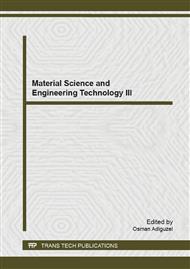p.32
p.36
p.40
p.46
p.51
p.57
p.62
p.66
p.70
Effects of Design Parameters for Clay Brick Kiln Using Computational Fluid Dynamics and Experimental Design
Abstract:
One of the most critical steps in brick making is firing, performed to harden the bricks. In a typical non-industrial setting, many pieces of extruded clays are stacked into a box-shaped kiln with equally-spaced rectangular vertical holes and another set of equally-spaced horizontal holes at the bottom across two sides. Roman roof tiles are used to cover the vertical sides, while leaving the horizontal holes opened, to complete the kiln assembly. Rice husk is filled in the holes of the kiln and is used as the fuel for firing. However, approximately 10% of the bricks, stacked conventionally, are always not appropriately fired. Therefore, this research aimed at simplifying model and redesigning the clay brick kiln using three-dimensional computational fluid dynamics (CFD). The studied parameters for 23 factorial designs were as follows: kiln height (200 – 225 cm), horizontal holes width (7.5 – 15 cm) and height (45 – 60 cm). The total volume of brick stack, averaged steady-state temperature and time to reach a steady-state temperature were selected as the response parameters. The analysis of variance (ANOVA) of 23 factorial design showed that the width and height of holes affected the time to reach steady-state but the averaged steady-state temperature and the total volume of brick stack were dependent on all 3 parameters. Then, a kiln was constructed according to the model with the maximum number of bricks and only 4% of the bricks were not appropriately fired.
Info:
Periodical:
Pages:
51-56
Citation:
Online since:
April 2015
Price:
Сopyright:
© 2015 Trans Tech Publications Ltd. All Rights Reserved
Share:
Citation:


